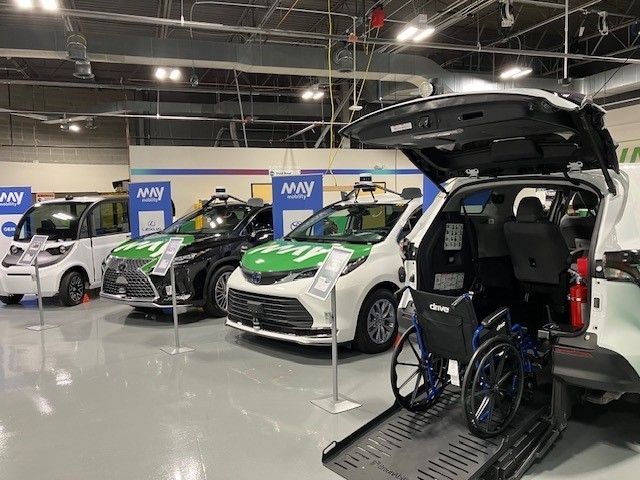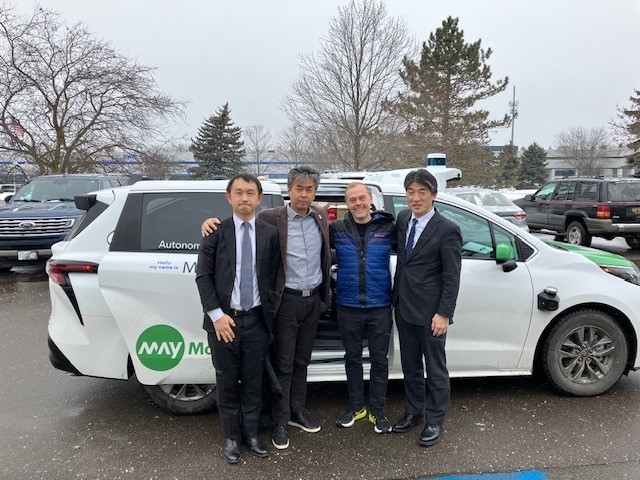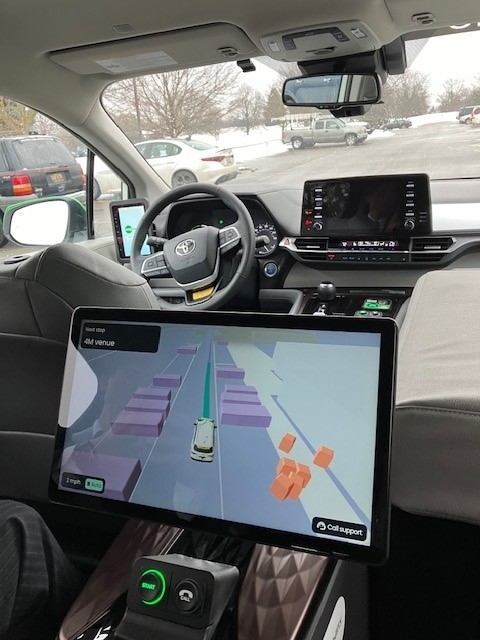Through the Eyes of the Consul General of Japan in Detroit
2025/2/3
Through the Eyes of the Consul General of Japan in Detroit
Vol.2
May Mobility: Autonomous Vehicles Thinking with the "Prefrontal Cortex"
Vol.2
May Mobility: Autonomous Vehicles Thinking with the "Prefrontal Cortex"
February 3, 2025
Hajime Jimmy Kishimori
Consul General of Japan in Detroit
Hajime Jimmy Kishimori
Consul General of Japan in Detroit
"We don’t trust people, especially pedestrians."
Ed, sitting in the backseat, spoke up. On January 16, 2025, we were driving through the town of Ann Arbor, Michigan, in an autonomous vehicle based on a Toyota Sienna. The ride had been smooth so far, but the car suddenly came to a quiet stop at a location with no traffic lights. Workers at a construction site on the side of the road were unloading tools from a vehicle. A grumpy-looking man peered suspiciously into our car.
The May Mobility autonomous vehicle remained stationary until they moved away.
In my previous posting in San Francisco, Waymo's autonomous vehicles, alongside Uber, had rapidly expanded their share of the market. I was astonished the first time I saw a driverless car operating in the city during a test run two and a half years ago. Now, it seems completely normal, with commercial operations well underway. Since there’s no tip required, the fare is cheaper than Uber, and it’s more relaxed without a driver constantly chatting with you.
There seem to be two types of environmental detection methods for autonomous vehicles. Tesla and Wave, for example, primarily use cameras. Waymo and May Mobility, on the other hand, add additional sensors. I once rode in a Cruise vehicle (though now both Honda and GM have withdrawn), and at an intersection, an elderly woman in the car ahead of us seemed unsure about driving, so she waved at us from inside the car, trying to signal for us to go ahead. However, since there was no driver to communicate with, our car remained motionless. Eventually, the elderly woman driver, frustrated, shrugged her shoulders and slowly drove through the intersection.
Once the data accumulated from sensors is analyzed, these kinds of body language gestures will likely be understood by autonomous vehicles as well.
"That’s basically correct, but it requires an enormous amount of data accumulation," Ed continued. "At May Mobility, we avoid unnecessary data accumulation for cost-saving reasons. Instead, we design the vehicles to have a kind of 'imagination.' For example, when the construction workers were unloading their tools earlier, the vehicle would consider what could happen if those tools were to fall, or if a person suddenly darted into the road. It imagines those scenarios as it drives."



